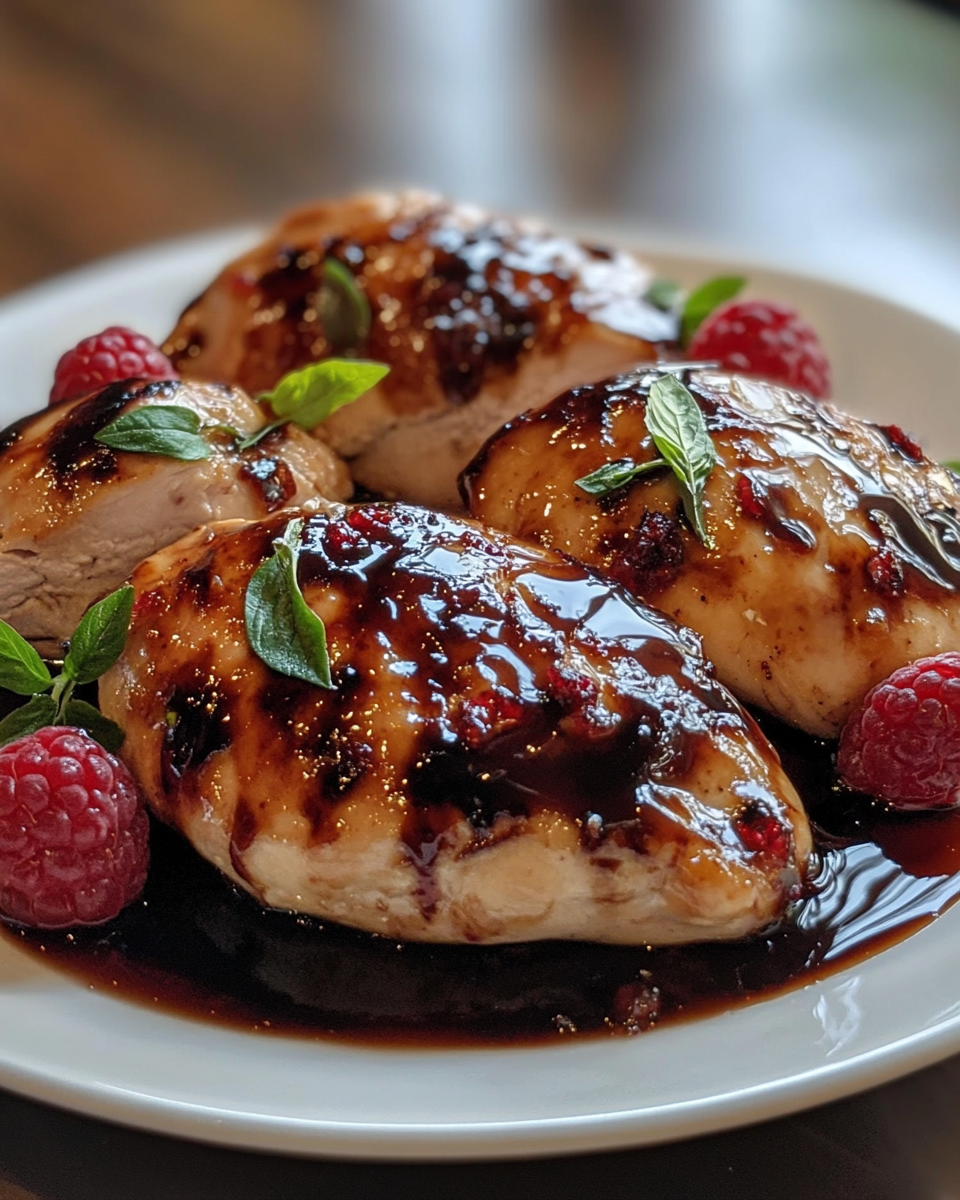Balsamic glaze is a simple yet powerful ingredient that can transform your chicken dishes. Its sweet and tangy flavor creates a perfect harmony with the savory notes of chicken. Whether you prefer pan-fried, baked, or grilled chicken, balsamic glaze is your secret weapon for creating a standout meal.
Why Use Balsamic Glaze on Chicken?
Balsamic glaze elevates chicken dishes by adding depth and complexity. Its sweetness balances the savory chicken, while its tanginess enhances the overall flavor. For those looking to try a different chicken recipe, check out these cheddar ranch chicken burgers for another bold flavor combination.
Additionally, balsamic glaze pairs beautifully with other ingredients, such as vegetables, herbs, and cheeses, making it a versatile addition to any meal.
Choosing the Right Chicken Cuts
The choice of chicken cut can impact how balsamic glaze interacts with the dish:
- Chicken Breasts: Lean and tender, ideal for quick cooking.
- Chicken Thighs: Rich and juicy, perfect for baking or grilling.
- Drumsticks: Great for roasting with a caramelized glaze finish.
For a creative spin on chicken, try this roasted red pepper, spinach, and mozzarella stuffed chicken recipe, which pairs wonderfully with balsamic glaze.
Cooking Methods for Balsamic-Glazed Chicken
1. Pan-Frying
- Heat olive oil in a skillet over medium heat.
- Sear the chicken until golden brown on both sides.
- Add balsamic glaze and let it simmer, thickening into a glossy coating.
2. Oven-Baking
- Preheat the oven to 400°F (200°C).
- Place the chicken on a baking sheet and bake for 20-25 minutes.
- Brush the chicken with additional glaze during the last 5 minutes for a caramelized finish.
3. Grilling
- Grill chicken over medium heat, turning occasionally.
- During the last few minutes, brush on the balsamic glaze, allowing it to char slightly for added flavor.
Recipe Variations with Balsamic Glaze
Balsamic glaze is versatile and can be combined with other ingredients for creative dishes:
- Caprese Chicken: Add mozzarella, tomatoes, and basil for an Italian-inspired meal.
- Honey Balsamic Glaze: Mix honey with balsamic glaze for a sweeter profile.
- Garlic Butter Pairing: For a seafood side dish, try these garlic butter baked scallops.
Serving Suggestions
Pair balsamic-glazed chicken with complementary sides for a balanced meal:
- Sides: Roasted vegetables, mashed potatoes, or a fresh green salad.
- Garnishes: Fresh basil, parsley, or a sprinkle of Parmesan cheese.
- Wine Pairing: A dry red wine like Merlot or Cabernet Sauvignon enhances the tangy glaze.
Tips for Perfect Balsamic-Glazed Chicken
- Use High-Quality Glaze: A good glaze ensures richer flavor and better caramelization.
- Avoid Overcooking: Chicken should reach an internal temperature of 165°F (74°C).
- Serve Warm: The glaze hardens as it cools, so serve immediately for the best experience.
FAQs About Balsamic Glaze on Chicken
Q: Can I make my own balsamic glaze?
Yes! Simmer balsamic vinegar over low heat until it reduces to a thick syrup. Add honey or sugar for additional sweetness.
Q: What types of chicken work best with balsamic glaze?
Boneless chicken breasts and thighs are the most versatile, but drumsticks work well for roasting.
Q: Can I use balsamic glaze with other proteins?
Absolutely! Balsamic glaze pairs wonderfully with pork, fish, tofu, and roasted vegetables.
Conclusion
Using balsamic glaze on chicken is a simple way to transform a basic meal into a gourmet dish. Its sweet and tangy flavors complement the savory chicken, while its versatility allows for endless creativity. Whether you’re trying classic recipes or exploring unique pairings like garlic butter baked scallops, balsamic glaze is a must-have ingredient in your kitchen.

